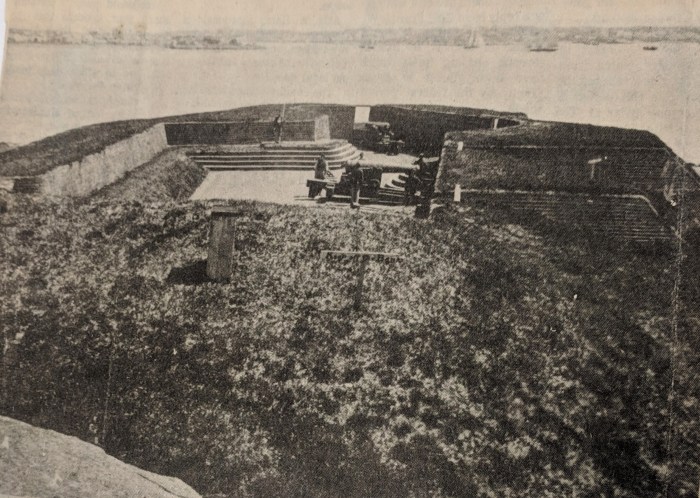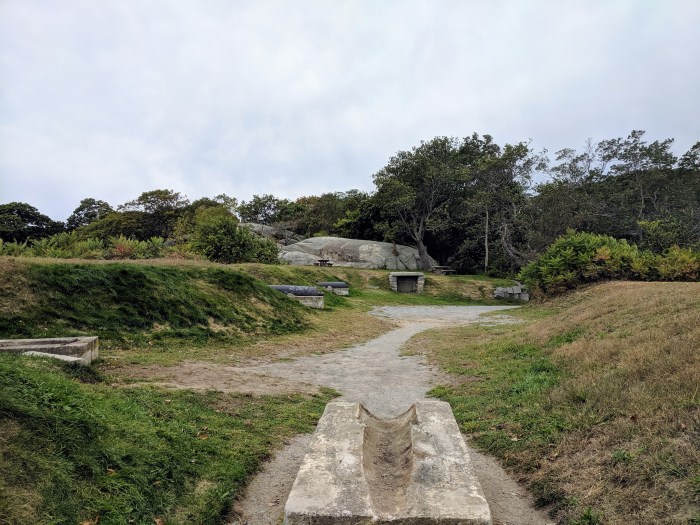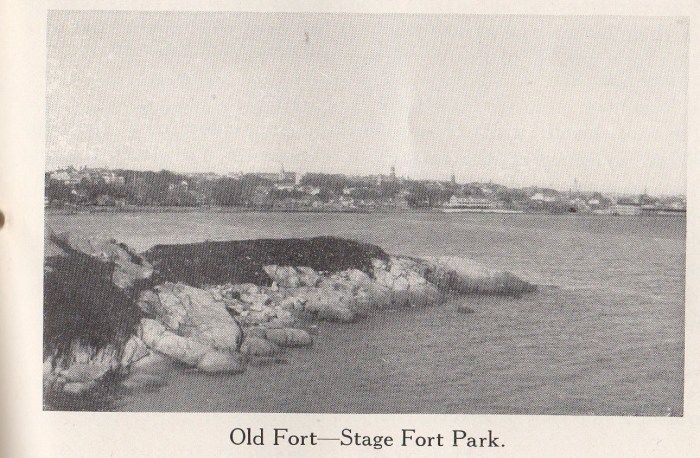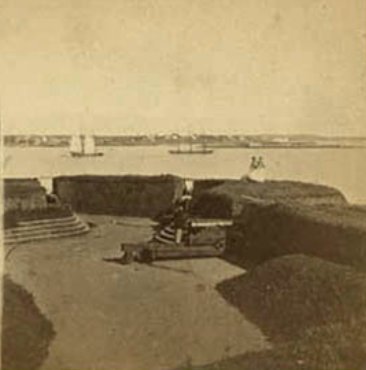ca.1870


Sam Novello asks GMG, “Joe, what happened to the cannons at Stage Fort Park—— two are gone?”
The cannon(s) are undergoing restoration (cleaning, chemical treatment and re-painting). In 2018, the CPA Committee awarded $22,705 of an estimated $46,000 to the Stage Fort Park Advisory Committee to refurbish the Parrot Rifle Cannon for work scheduled to commence spring 2020. The project is led by the Stage Fort Park Advisory Committee. The grant application project summary indicates the scope of work as follows:
- The fabrication of an aluminum “historic-rendering of a carriage for the Parrot Rifle Cannon as part of a multi-year project to restore the Fort area of Stage Fort Park.
- Cleaning, treatment and repainting of the Parrot Rifle Cannon.
- Machining or “sleeving” of the Parrot Rifle Cannon to create a narrow lined bore capable of firing a small charge report.
“Our final goal is to restore the Fort area as a historic feature of the Park and its importance to our local military history.* Repairs and restoration of this site are long overdue. The ramparts are overgrown with vegetation**. The cannon barrels are suffering due to neglect. The barrels are subject to trash, dirt and debris. We hope to preserve this site for future generations. The cleaning, capping and painting of the cannon will protect the barrel against future damage. We have proposed an annual stipend in the city budget of $2000 for maintenance of the Fort as well as a security plan for the Fort which would include lighting and security cameras. *Our ultimate goals include a visitor education center with historic references to the Fort and its history. It is expected that the entire Stage Fort Park will be used as a centerpiece of the city’s 400th anniversary celebrations.”
– Stage Fort Park Advisory Committee CPA application excerpt, photo from packet and phasing goals
Read the full application here: 2019 CPA Application SFP Parrot Rifle Cannon Carriage
*There is no finalized plan for this area overall. (See photographs then/now below.)There IS a history of Fort use and restoration for historic battles –as well as city celebrations– honoring this legacy and the kind souls who volunteered to do so.
For example: I’m not sure if the 187th Infantry Brigade was paid for the work they did in 1973, which I’m assuming was the last big overhaul. The CPA grant is just about the work on the cannons. The Historical Commission wrote a letter of support stressing replica accuracy using period materials (wood and metal)
**The area is overgrown at the moment because of various DPW work on the boulevard and future plans. (When I photographed the area annually it’s cleared.)
Stage Fort is the oldest fort in the Massachusetts Bay Colony.
2019

ca.1870


1973
As part of the city’s 350th celebration prep, the cannon site area (earthworks, entrance area, powder magazine, and gun embrasures) was restored by an engineer brigade from Wollaston. The design intent turned the clock back to how the fort would have been built out in the 1700s. Julian Hatch, the chairman of the 350th, had been director of public works for the city. The project was decades in the wishing and sensitively designed at long last.
1930
In 1930, the Fort was spruced up from its formal design post Civil and Spanish war. Fisherman’s Field Stage Fort information plaques were commissioned and unveiled.
Bronze tribute plaques embedded in Tablet Rock at Stage Fort Park detail the site’s history and were commissioned and unveiled at different times. The monumental and stunning Founders plaque from 1907 on Tablet Rock itself is in fantastic condition. Two DAR plaques were inlaid on the glacial outcroppings past half moon beach on the way to the cannons. The Fisherman’s Field (ca.1930) is so worn it’s nearly indecipherable, though that’s part of its charm. The plaque compels close inspection, lingering and discovery. It’s a fun family activity for anyone who likes a challenge. For those who want help reading the content, I transcribed it back in 2010. ”
Printable PDF of the plaque translation here

Read more about historic battles and Gloucester Stage Fort Park in this trivia quiz designed by Shaun Goulart, GHS history teacher, in this prior GMG post.
1921

copy of Frank L. Cox fine art photograph (pre dates 1921) he used to illustrate his pocket Gloucester guide “The Gloucester Book”, and sell prints
ca.1870














